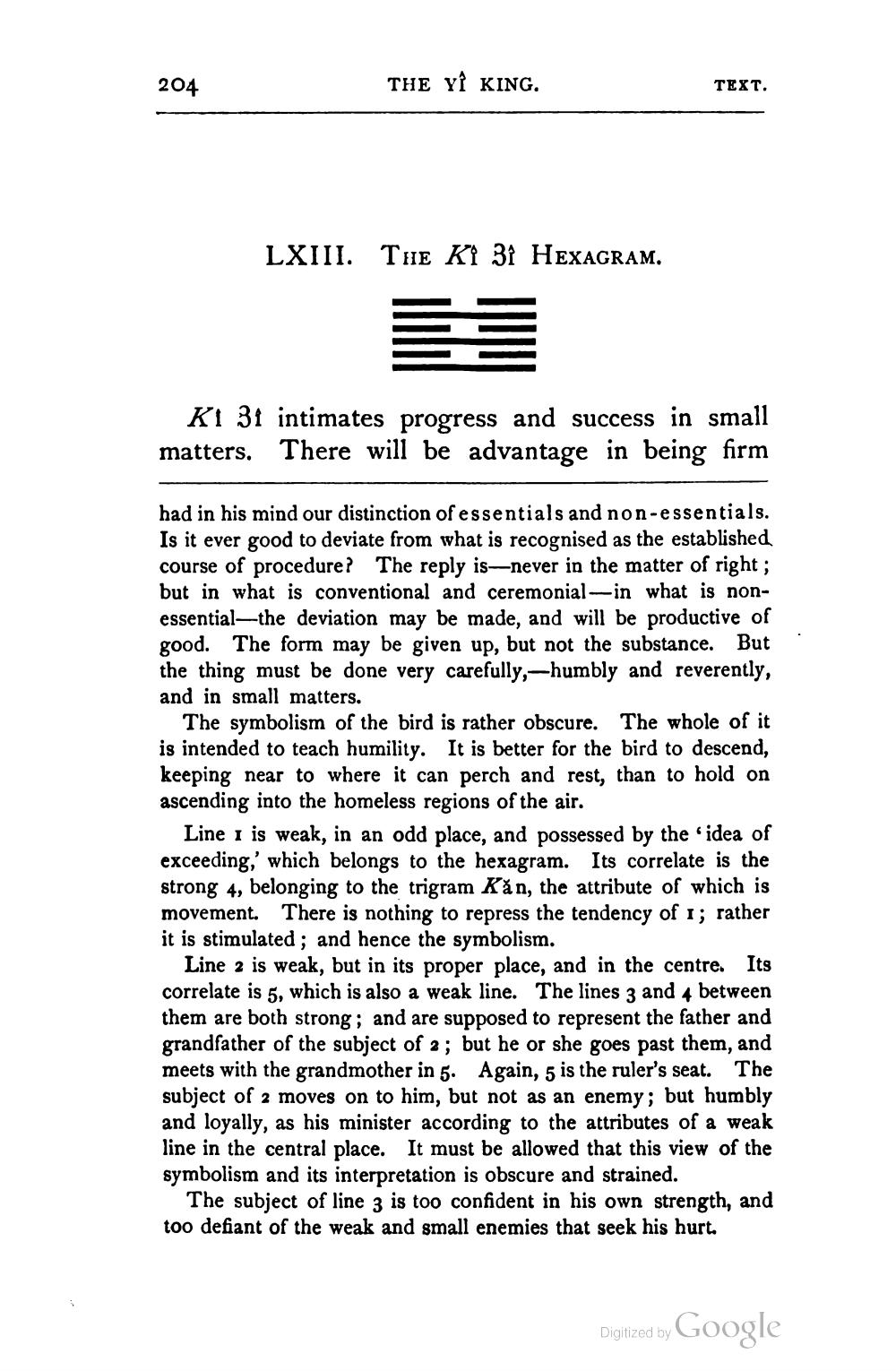________________
204
THE YI KING.
LXIII. THE KI 31 HEXAGRAM.
TEXT.
KI 31 intimates progress and success in small There will be advantage in being firm
matters.
had in his mind our distinction of essentials and non-essentials. Is it ever good to deviate from what is recognised as the established course of procedure? The reply is-never in the matter of right; but in what is conventional and ceremonial-in what is nonessential-the deviation may be made, and will be productive of good. The form may be given up, but not the substance. But the thing must be done very carefully,-humbly and reverently, and in small matters.
The symbolism of the bird is rather obscure. The whole of it is intended to teach humility. It is better for the bird to descend, keeping near to where it can perch and rest, than to hold on ascending into the homeless regions of the air.
Line I is weak, in an odd place, and possessed by the 'idea of exceeding,' which belongs to the hexagram. Its correlate is the strong 4, belonging to the trigram Kăn, the attribute of which is movement. There is nothing to repress the tendency of 1; rather it is stimulated; and hence the symbolism.
Line 2 is weak, but in its proper place, and in the centre. Its correlate is 5, which is also a weak line. The lines 3 and 4 between them are both strong; and are supposed to represent the father and grandfather of the subject of 2; but he or she goes past them, and meets with the grandmother in 5. Again, 5 is the ruler's seat. The subject of 2 moves on to him, but not as an enemy; but humbly and loyally, as his minister according to the attributes of a weak line in the central place. It must be allowed that this view of the symbolism and its interpretation is obscure and strained.
The subject of line 3 is too confident in his own strength, and too defiant of the weak and small enemies that seek his hurt.
Digitized by Google




